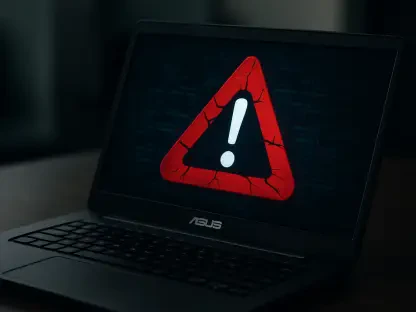Overview of the Cybercrime Landscape
In an era where digital transactions underpin global economies, cybercrime has emerged as a formidable threat, costing industries billions annually and compromising sensitive data across sectors like finance, healthcare, and retail. The scale of this menace is staggering, with attacks ranging from ransomware to data breaches impacting organizations of all sizes. Governments and corporations alike grapple with the fallout, as these illicit activities disrupt operations and erode public trust in digital systems.
Key players in this shadowy domain include groups like Scattered Spider and ShinyHunters, notorious for their sophisticated attacks on major corporations. Scattered Spider has targeted industries such as aviation and insurance with high-profile hacks, while ShinyHunters has gained infamy for extortion schemes, often collaborating with other entities for maximum impact. Their recent claims of retirement have raised eyebrows, as such announcements rarely signal a true end to their activities but rather a potential shift in strategy.
The technological arsenal at the disposal of these criminals, including advanced hacking tools and ransomware, amplifies their destructive potential. Data extortion schemes have become a lucrative business model, exploiting vulnerabilities in systems worldwide. Despite claims of stepping away, the cybersecurity industry remains wary, asserting that the persistent nature of these threats, driven by financial incentives and evolving tactics, is unlikely to diminish.
Analyzing Retirement Claims of Scattered Spider and ShinyHunters
Historical Patterns and Skepticism
Retirement claims by cybercrime groups are not a new phenomenon, often serving as a smokescreen for rebranding or evading law enforcement scrutiny. A notable example is the GandCrab ransomware crew, which declared retirement several years ago, only to resurface under a new alias with even more aggressive campaigns. This historical precedent casts doubt on the sincerity of similar announcements made by contemporary groups.
Experts point out that such declarations are frequently tactical maneuvers rather than genuine exits from the criminal underworld. For Scattered Spider and ShinyHunters, repeated retirement statements on platforms like Telegram have only fueled skepticism among analysts. These messages often coincide with periods of heightened pressure from authorities, suggesting a calculated attempt to lower their visibility temporarily.
The behavior of these groups further undermines their claims, as patterns of activity resumption shortly after supposed retirements have been observed. Analysts note that the loosely connected nature of these networks allows individuals to disband and reform under different identities, making a complete cessation of operations highly improbable. This adaptability is a hallmark of their resilience in the face of crackdowns.
Expert Insights and Threat Continuity
Industry leaders remain unconvinced by the retirement manifestos, emphasizing the likelihood of continued or altered criminal endeavors. James Maude from BeyondTrust suggests that these groups may simply be lying low, awaiting an opportune moment to strike again with refined methods. Cian Heasley of Acumen Cyber adds that internal debates over risk and reward could be driving such public statements, rather than a true intent to retire.
Casey Ellis from Bugcrowd offers a perspective on potential shifts in approach, interpreting cryptic messages from the groups as indicators of a pivot toward more discreet, targeted attacks. There is also speculation that members might monetize their expertise by selling skills to other criminal entities, ensuring their influence persists even if their public presence wanes. Recent activities, including the reappearance of communication channels shortly after retirement claims, contradict the notion of a full stop.
Looking ahead, experts anticipate that these groups could adapt by focusing on less visible operations or by inspiring new actors to adopt their techniques. The financial motivations driving cybercrime ensure that any vacuum left by their supposed departure would be quickly filled. This continuity of threat underscores the need for organizations to remain on high alert, regardless of public declarations from these hackers.
Challenges in Addressing Evolving Cybercrime Threats
The dynamic nature of cybercrime groups poses significant hurdles in tracking and mitigating their impact. Operating as loosely connected networks, these entities can dissolve and reform with ease, often under new names or structures that evade detection. This fluidity complicates efforts to predict their next moves or to dismantle their operations entirely.
Law enforcement faces substantial challenges in pursuing such groups, as their ability to adapt and hide behind new identities frustrates traditional investigative methods. International cooperation is often necessary, yet jurisdictional differences and varying levels of resources hinder swift action. The result is a cat-and-mouse game where criminals frequently maintain the upper hand.
Beyond active threats, the lingering risks from past breaches add another layer of complexity. Experts like Sam Rubin from Palo Alto Networks highlight the danger of undetected backdoors in compromised systems or stolen data resurfacing years later. To counter these evolving risks, organizations must prioritize continuous monitoring, update security protocols regularly, and invest in robust incident response plans to mitigate potential damage.
Regulatory and Security Implications
Combating cybercrime requires a coordinated effort between law enforcement agencies and international bodies, especially when dealing with high-profile groups like Scattered Spider and ShinyHunters. Collaborative initiatives aim to disrupt criminal networks through intelligence sharing and joint operations, though success remains elusive due to the global and decentralized nature of these threats. Strengthening these partnerships is critical to closing gaps in enforcement.
Compliance with cybersecurity standards and regulations plays a vital role in safeguarding organizations against both active and dormant threats. Retirement claims from notorious groups may prompt regulators to intensify scrutiny on data protection practices, pushing for stricter mandates. Businesses must align with these frameworks to minimize vulnerabilities and demonstrate accountability in their security posture.
However, adhering to regulations alone is insufficient in the face of rapidly evolving dangers. Proactive security measures, such as advanced threat detection systems and regular audits, are essential to stay ahead of potential exploits. Organizations should also foster a culture of cybersecurity awareness, ensuring that all levels of staff are equipped to recognize and respond to suspicious activities, thereby fortifying defenses beyond mandatory requirements.
Future Outlook for Cybercrime and Cybersecurity Defense
Speculation abounds regarding the next steps for Scattered Spider and ShinyHunters, with scenarios ranging from rebranding to temporary pauses in activity. Nivedita Murthy from Black Duck warns of the emergence of copycat groups inspired by their methods, driven by the lucrative rewards of cybercrime. Such developments could perpetuate a cycle of threats even if original members step away.
Emerging trends point to increasing financial incentives attracting new actors into the space, fueled by the accessibility of hacking tools and the profitability of data extortion. This influx of participants is likely to intensify competition among criminals, potentially leading to more sophisticated and frequent attacks. The cybersecurity community must brace for a landscape where threats multiply in both scope and complexity.
Innovation in defense mechanisms offers hope, with advancements in threat intelligence and cross-industry collaboration paving the way for more effective responses. Global economic and technological factors, such as the proliferation of connected devices, will continue to shape the battleground. Adaptive strategies that anticipate these shifts, rather than merely react to them, are imperative for maintaining a strong security posture in the years ahead.
Conclusion and Recommendations for Ongoing Vigilance
Reflecting on the insights gathered, it becomes evident that the cybersecurity industry’s skepticism toward the retirement claims of groups like Scattered Spider and ShinyHunters is well-founded. The historical patterns, expert analyses, and persistent risks highlighted throughout the discussions paint a picture of an ever-evolving threat landscape that demands constant attention. The consensus points to a reality where these groups likely adapt rather than disappear, posing ongoing challenges to digital security.
Moving forward, organizations need to prioritize actionable steps such as investing in comprehensive cybersecurity frameworks that encompass both prevention and response capabilities. Enhancing employee training to recognize phishing attempts and other social engineering tactics emerges as a critical measure to reduce human error as a point of entry for attackers. Additionally, fostering partnerships with threat intelligence providers could offer early warnings of emerging risks.
A key takeaway is the importance of treating retirement claims as potential evolutions of threats rather than conclusions. Businesses are encouraged to explore cutting-edge technologies like artificial intelligence for anomaly detection, while also advocating for stronger international policies to combat cybercrime. By maintaining a forward-thinking approach and integrating these strategies, the industry can better position itself to tackle both current and unforeseen challenges in the digital realm.









